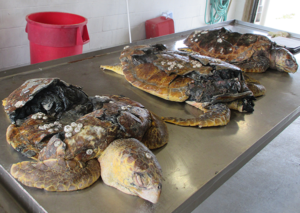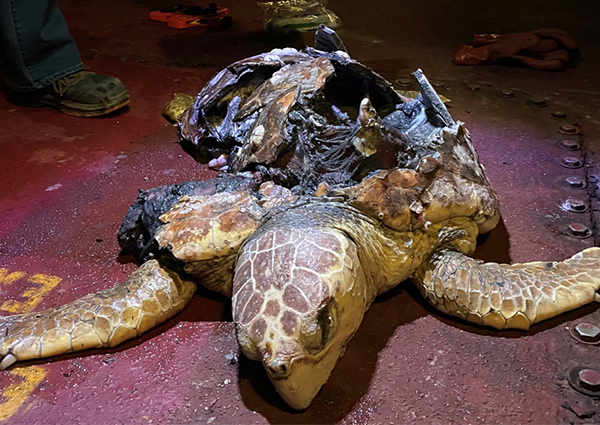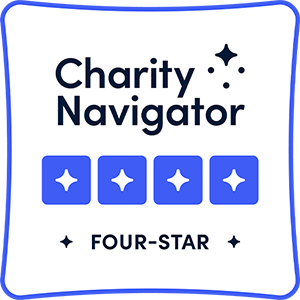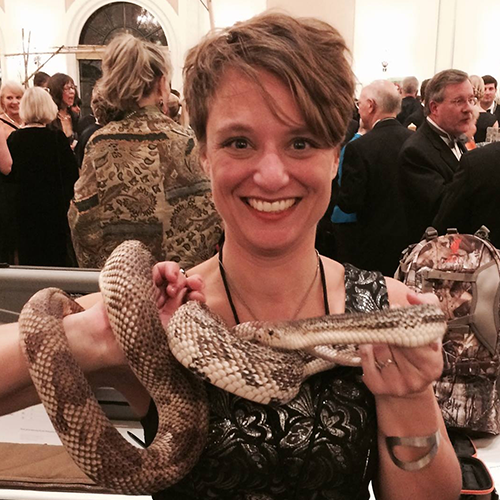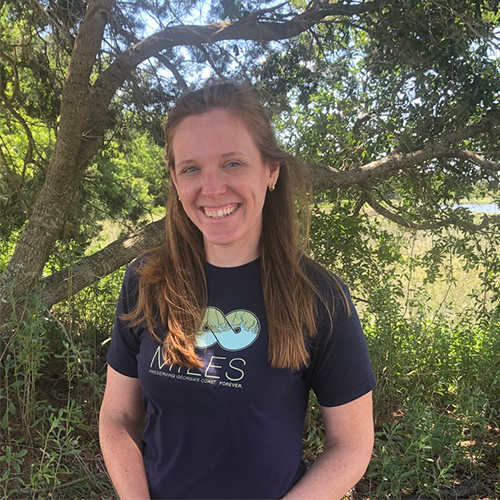An Unnecessary Risk
Given the already high numbers of sea turtles already killed this year, the increased number of nesting females and other turtles in July and August, and the fact that the Corps has already completed the dredging it had planned for 2022, they must reconsider this reckless idea. The Corps has routinely claimed that it will cease work when the risk is deemed too high, and this scenario certainly rises to that level.
We understand the importance of maintaining Georgia’s ports, but this is not an urgent need. The Corps has already dredged Brunswick Harbor twice during the winter dredging window, and they’ll have another opportunity beginning in December. This is the exact opposite of how the process should work—rather than carefully considering the risks and making a plan that will protect our species, the Corps is trying to fit in extra dredging for convenience’s sake. While the Corps claims their latest approach is balances the needs of multiple species, in fact what they are now proposing fails take into account the needs of any species. If they move forward, they will have blood on their hands.
Loggerhead killed by hopper dredge
We have too much to lose.
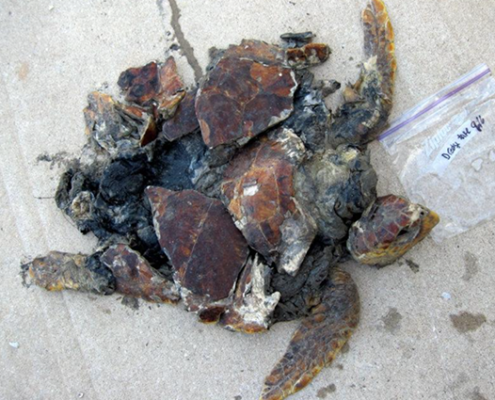
The Corps claims that the South Atlantic Biological Opinion (SARBO)—a new document guided by Endangered Species Act rollbacks under the previous administration—gives them the authority to disregard these long-standing protections and “take” (or less euphemistically, kill) as many as 214 loggerheads across the Southeast over the next three years.
This legal allowable take for loggerheads could lead to significant declines in our population—potentially killing as many as 87% of the females nesting in the vicinity of the Brunswick shipping channel, according to GADNR data.
Most ominously, there are no restrictions on the age class or life stage of the animals allowed to be killed during this process. The loss of reproductively-active adult females will be particularly devastating. Unlike other species affected by dredging activity, loggerhead sea turtles don’t reach sexual maturity until their early to mid 30s. Any adult loggerhead killed will take at least three decades to replace—approximately three times as long as the other species of concern.
We already know just how devastating summer dredging can be. In September 2009 (several months earlier than the typical start in December but still after the majority of adult females had left the area), USACE conducted a test case to determine the feasibility of summer dredging on Georgia’s coast. Within the first nine days of dredging in Brunswick, four loggerheads were killed before the project was discontinued, including one large loggerhead believed to be an adult or older subadult. In Savannah, six loggerheads were taken in 15 days of dredging, including at least one adult. This late summer mortality rate was more than eight times higher than that of the winter dredging window—and presumably would have been even more significant, if it had taken place during the early summer timeframe the Corps intends to use this year. Further, there are multiple examples of the Corps reaching their legally allowable take limits and, instead of shutting down the project, simply asking for—and receiving—permission to kill even more turtles.
Frequently Asked Questions
Wait, what happened? I thought OHM won their court case last year?
Yes, our lawyers at the Southern Environmental Law Center (SELC) were successful in arguing for a preliminary injunction to stop all hopper dredging during the spring and summer of 2021.
Last July, the Corps accepted public comments on their draft Environmental Assessment (EA). Unfortunately, the EA contained multiple inaccuracies and misrepresented the data collected by the Georgia Sea Turtle Cooperative and did not adequately assess the risk to sea turtles and other species. SELC submitted comments on OHM’s behalf—along with nearly 1,000 comments by concerned advocates. Other agencies, including Georgia DNR and the National Marine Fisheries Service, also submitted comments in opposition. Unfortunately, the Corps continued to push forward and published their Final EA earlier this year.
Do my comments matter?
YES! We’ve stopped summer dredging before, and we can do it again. More than 1,500 Georgians made their voices heard in March 2021, when the Georgia Department of Natural Resources opened up a comment period on the proposal for year-round dredging in Brunswick Harbor. 100% of those letters were in opposition. During the Corps’ public comment in July, nearly 1,000 additional comment letters were submitted. If you were one of the ones who submitted a letter, thank you! It can be discouraging to have to fight the same battles again and again—but we need your voice more than ever.
What would happen if dredging is conducted in the spring and summer months?
The simple answer is, we expect many more loggerhead sea turtles to die, including nesting females. Historically, loggerheads have been the most significantly impacted by hopper dredges in Georgia. The summer months are when adult, reproductively-active females congregate in local waters—putting them directly in harm’s way.
So, are you against all dredging?
No. We recognize that annual removal of sediment is necessary in order to maintain safe shipping channels. We also know that some incidental take is expected with normal dredging activities. However, this “operations and management” dredging has been conducted during winter months, when adult nesting loggerheads are far less abundant, for more than three decades. To ensure the continued survival of the species, the December 15-March 31 annual maintenance dredging windows must remain in place.
What is a ‘take’ of an endangered species?
To conduct dredging in waters where sea turtles or other protected species occur, the U.S. Fish & Wildlife Service and the NMFS must authorize incidental “takes” in accordance with the federal Endangered Species Act. This means that some animals will die or be maimed by an activity authorized by the federal government. A “take” is a kinder, gentler way of saying kill—in this case, essentially grinding up live turtles in the blades of a hopper dredge. Photographs like the ones on this page show just how gruesome an end a sea turtle suffers when falling victim to dredging.
What is the SARBO?
SARBO stands for South Atlantic Regional Biological Opinion. NMFS issues Biological Opinions to document their opinions on how federal agencies’ actions affect Endangered Species Act (ESA)-listed species and critical habitat in the southeast. These opinions provide an exemption for the take of federally listed species and specify the extent of take allowed and the conditions with which the agencies must comply. The most recent SARBO is a 653-page document released in July 2020. It contains analyses conducted within the framework of recent ESA rollbacks and new standards that afford endangered species far less protection. The 2020 SARBO eliminated the use of dredging windows to reduce sea turtle mortality. As a consequence, the USACE has informed Georgia DNR that they intend to dredge the Brunswick and Savannah channels during the spring and summer of 2021.
Aren’t loggerhead sea turtles recovered already?
No. But if you’ve been following sea turtle conservation for the past few years, you’ve probably heard a lot of celebration. The excitement is understandable—record-setting nesting years like those in 2019, 2016, 2015, and hopefully right now in 2022 represent decades of hard work on behalf of many dedicated volunteers and staff. But while annual nesting is slowly increasing, models show that the Northern Recovery Unit population (loggerheads born on nesting beaches from the Florida/Georgia border through southern Virginia) is still only a third to half of its size from the 1960s. And despite the recent highs, it wasn’t long ago when we experienced record low nesting seasons—setting up a period of plateau or decline until 2040. If dredging windows or other protections are lifted, there could be even more precipitous declines.
What about right whales?
One Hundred Miles is passionate about protecting the North Atlantic right whale. But winter dredging has safely coincided with the right whales’ annual calving season in Georgia for more than 30 years. In all that time, there have been no documented interactions between maintenance dredges and right whales. It is extremely rare for right whales to venture into the channels where dredging operations take place, and even if they did, maintaining slow ship speeds would mitigate any risk. GADNR, whose biologists devote significant resources to protecting North Atlantic right whales and assume great personal risk in monitoring and responding to entanglements, opposes the change in dredging windows.
Further, while the Corps claims that their actions are due to concerns over right whale safety, they inexplicably claim that their survey vessels must travel at high speeds to complete surveys and to reach offshore disposal sites. This is not the case. If the Corps is truly concerned about protecting right whales, why aren’t they willing to comply with recommended ship speed regulations of ten knots or less?
What other protected species could be affected?
Atlantic sturgeon are found in the lower estuaries and shipping channels during the winter and spring (December-May). Some takes are expected during winter dredging. However, based on the relatively large size of the Savannah and Altamaha River populations and the fact that documented mortalities are low (3.4 Atlantic sturgeon annually across 3 channels) and primarily juveniles and subadults, it is unlikely that the current mortality level associated with channel maintenance dredging will have an effect on population recovery. Further, unlike with sea turtles, preventative methods, such as having a trawler sweep ahead of the dredge to clear its path, is effective.
What can I do to help?
As we move forward with the litigation process, we’ll keep you updated through email, social media, and our website. We’re asking you to make issues like this one known by sharing with your own network. Forward emails. Share posts. Bring it up in conversation. You can also join us in asking Georgia’s decision makers to speak out and stop the Corp’s deadly—and wholly unnecessary—plan.
“We’ve worked too long and too hard protecting Georgia’s sea turtles to turn back now. We cannot—and will not—allow the Corps of Engineers to throw away more than 50 years of conservation efforts and jeopardize the recovery of our beloved loggerheads.”
Please contact Catherine for more information about how you can take action to protect Georgia’s sea turtles.

